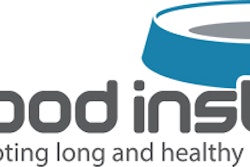Petfood companies that export, or want to export, can make it as painless as possible by following six steps. This article is based on Animal and Plant Health Inspection Service (APHIS) guidelines and assumes the exporter is from the US. However, much of it applies to a petfood exporter from any country, but instead of APHIS the home country's inspection service will be used.
The role of APHIS
The National Center for Import and Export (NCIE) is at the forefront of APHIS' effort to safeguard the health of US agricultural resources. Its many animal health experts work closely with other federal agencies, states, foreign governments, industry, trade associations, professional groups and others to enhance international trade and cooperation, while preventing the introduction of dangerous and costly pests and diseases.
The primary role of APHIS is to assist US exporters in meeting the import requirements of other countries. In this role, APHIS negotiates with foreign governments to establish export requirements. The agency also does the following:
- Inspects exporting facilities if required by the importing country.
- Maintains lists of approved facilities as needed and provides this information to foreign governments.
- Assists exporters when products are put on hold overseas.
- Explains APHIS policies to foreign officials and the general public.
The exporter's role
Countries may change their import requirements without notice. In all cases, the exporter has the responsibility of having their importer confirm with the responsible authority in the importing country the import requirements prior to shipping. The exporter should obtain any required animal health product certificates prior to shipping any product. Most countries will not recognize zoosanitary certificates issued after products have shipped.
1. Use right requirements
The Veterinary Services (VS) branch of APHIS has created the International Animal Product Export Regulations (IREGS) to provide exporters of certain animal-origin products with the requirements of importing countries. These IREGS are detailed at www.aphis.usda.gov/ncie/iregs/products/. IREGS are invaluable for finding the latest requirements for exporting petfoods to various countries around the world, but should be verified with the importer in all cases, because countries may change their requirements at any time.
If you have any questions or concerns regarding the procedures and requirements to obtain a health certificate for an animal product being exported, you should contact the VS Area Office covering the area from where the product will be exported (or the area in which your office is located). To find out the VS Area Office to contact, go to www.aphis.usda.gov/animal_health/area_offices/. There are two import/export VS Area Offices:
- Eastern region, +1.919.855.7242.
- Western region, +1.970.494.7370.
2. Prepare export certificate
Different countries require different paperwork. The VS Form 16-4 is the generic export certificate for animal products and can be obtained through your APHIS area office. It is only used for products that contain animal-origin ingredients.
For countries that do not accept the VS Form 16-4, APHIS uses "Letterhead Certificates." You can apply for one by contacting your Veterinary Services area office. Once you complete the appropriate form, the area office will copy it onto their letterhead, add a certificate number and then sign and seal it.
3. Have all documents
Any export certificate that indicates a product has been tested may not be endorsed until the test results have been verified. If a negative result is cited or a product is said to be "free" of something, lab results are needed. Test results must clearly support the statement listed on the certificate and relate to the lot of material being certified.
If a statement on the export certificate is not based on an affidavit, it must be confirmed by inspection. If the importing country requires the exporting facility to be inspected, make sure it is done prior to export. Remember, APHIS-NCIE will not sign a statement they cannot verify.
4. Obtain prior to export
Many countries, including European Union (EU) countries, require export certificates to be endorsed prior to the date of export. APHIS will not predate or postdate an export certificate. VS area offices have been authorized to date export certificates with the date they are received in their office. Offices usually complete certificates in 24-48 hours. But, sometimes they may be delayed due to workload or movement of personnel.
5. Request timely re-inspections
To meet EU requirements, many facilities must be inspected and approved. Please note that the inspection date is the date the facility was physically inspected. The approval date is the date the facility was actually approved as meeting all the requirements. These dates can be weeks apart, so it's important for facilities to be aware of both dates. Facilities must be re-inspected one year from the inspection date. In order to prevent lapses in approval, exporters should start the re-approval process two months before the anniversary of you inspection date.
6. Make inspections efficient
If you are exporting to several different countries and will need several export certificates, ask that the APHIS inspector do as many inspections as possible at the same time.
Useful resources
Exporting your petfood products can be a confusing process and keeping up with the most up-to-date information can be difficult. The following resources can help.
Facilitating trade: USDA's National Center for Import and Export (NCIE) helps facilitate trade of agricultural products through defining criteria for trade. Go to www.aphis.usda.gov/ncie.
Import requirements: The International Animal Product Export Regulations (IREGS) site provides exporters with the APHIS understanding of importing countries requirements for certain animal-origin products. These IREGS are detailed at www.aphis.usda.gov/ncie/iregs/products.
The USDA's Foreign Agriculture Service (FAS): provides links and information to the offices and responsible parties for countries around the world. If NCIE doesn't have the information you are looking for, FAS contacts can often help clarify specific country requirements (www.fas.usda.gov/scriptsw/fasfield/ovs_directory_search.asp).
APHIS area offices: Area offices provide health certificate endorsements, are knowledgeable about country requirements, provide export certifications and are essential in facilitation of accurate trade documentation. Go to www.aphis.usda.gov/animal_health/area_offices.
Export certificate forms: The VS Form 16-4 is the generic export certificate for animal products, and can be obtained through your APHIS area office.
Export data: The USDA's FAS is also a source of a plethora of export data from around the world. Go to www.fas.usda.gov/ustrade/ustexbico.asp?QI.
Export basics: www.export.gov provides information regarding export basics, market information, tariff rates, trade leads, etc. It is a collaborative effort of 19 government agencies.
Market Access Program
US exports of petfood are growing and exceed $1 billion. The Pet Food Institute (PFI) uses the Market Access Program (MAP), which is part of the FAS within the USDA. MAP includes a program that matches marketing funds for promoting US petfoods in other countries.
The PFI MAP program was launched in 1993. The program currently operates in Japan, Mexico, China, Chile, Russia, Taiwan and Central America. In 2007 PFI received US$1.3 million for promotion of non-branded US petfood. PFI MAP activities focus on consumer education and outreach to veterinarians. The program is a major contributor to building markets and maintaining access for US products.
PFI has submitted an application for funding for next year. The final award amount is determined by the Farm Bill. For more information, contact Kurt Gallagher at PFI in Washington, DC, USA, Tel: +1.202.367.1120, kurt@ petfoodinstitute.org.
















